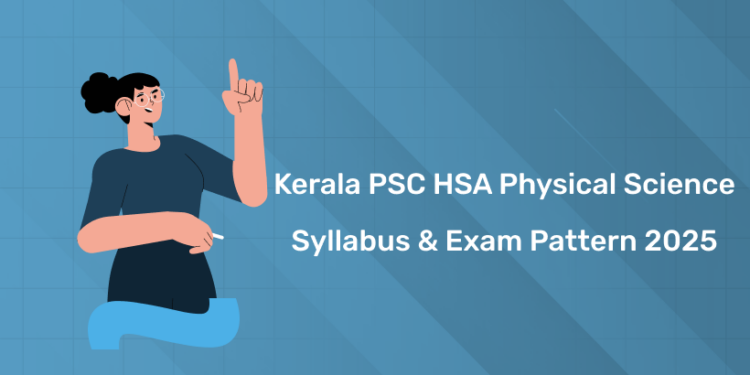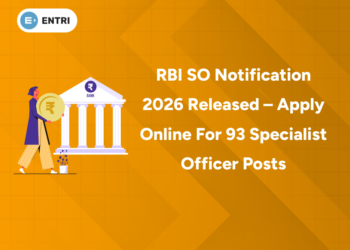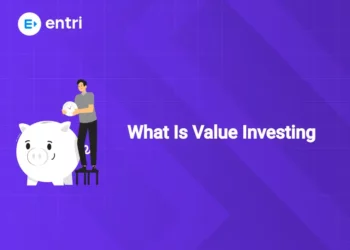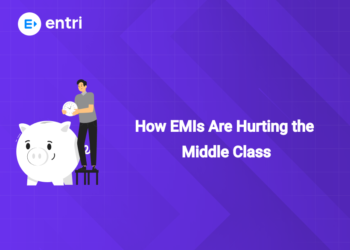Table of Contents
The Kerala PSC HSA Physical Science syllabus 2025 and exam pattern have been officially released following the recruitment announcement. Aspirants can now begin their preparation by using the updated syllabus, which offers a comprehensive guide to the key topics and exam structure. Start your preparation today by reviewing the latest syllabus PDF here.
Kerala PSC HSA Physical Science 2025 Recruitment Highlights
| Kerala PSC High School Teacher Physical Science Notification 2025 | |
| Job Type | Government Job |
| Post Name | High School Assistant |
| Category Number | 605/2024 |
| Subject | Physical Science |
| Notification Release Date | December 31, 2024 |
| Exam Date | August 06, 2025 |
| Admit Card | July 23, 2025 |
| Total Marks | 100 |
| Official Website | www.keralapsc.gov.in |
Kerala PSC HSA Physical Science Previous Question Papers – PDF
1: The first recipient of the ‘Rajiv Gandhi Khel Ratna’ award?
| Category Number | PDF Link |
| 132/2016 | |
| 133/2016 | |
| 134/2016 | |
| 084/2018 |
Enroll in Kerala's Top-rated HSA Coaching Program!
സർക്കാർ ജോലി എന്ന സ്വപ്നം ഇനി സ്വപ്നം മാത്രമല്ല! Join Entri's HSA Coaching Program
Join Now!Kerala PSC HSA Physical Science Syllabus & Exam Pattern 2025 PDF
The Kerala PSC HSA Physical Science 2025 syllabus and exam pattern have been officially released. Candidates can now access the updated syllabus, which details the key topics and exam structure to help plan their preparation effectively.
Kerala PSC HSA Physical Science Detailed Syllabus 2025
Preparing for the Kerala PSC HSA (High School Assistant) Physical Science exam requires a thorough understanding of the syllabus and familiarity with the exam pattern. Here’s an overview of the key subjects and topics covered:
PART A
Module I : Renaissance and freedom movement
Module II: General Knowledge and current affairs
Module III: Methodology of teaching the subject
♦ History/conceptual development. Need and Significance, Meaning Nature and Scope of the Subject.
♦ Correlation with other subjects and life situations.
♦ Aims, Objectives, and Values of Teaching – Taxonomy of Educational Objectives – Old and revised
♦ Pedagogic analysis- Need, Significance and Principles.
♦ Planning of instruction at Secondary level- Need and importance. Psychological bases of Teaching the subject – Implications of Piaget, Bruner, Gagne, Vygotsky, Ausubel and Gardener – Individual difference, Motivation, Maxims of teaching.
♦ Methods and Strategies of teaching the subject- Models of Teaching, Techniques of individualising instruction.
♦ Curriculum – Definition, Principles, Modern trends and organizational approaches, Curriculum reforms – NCF/KCF.
♦ Instructional resources- Laboratory, Library, Club, Museum- Visual and Audio-Visual aids – Community based resources – e-resources – Text book, Work book and Hand book.
♦ Assessment; Evaluation- Concepts, Purpose, Types, Principles, Modern techniques – CCE and Grading- Tools and techniques – Qualities of a good test – Types of test items- Evaluation of projects, Seminars and Assignments – Achievement test, Diagnostic test – Construction, Characteristics, interpretation and remediation.
♦ Teacher – Qualities and Competencies – different roles – Personal
Qualities – Essential teaching skills – Microteaching – Action research.
PART III
Module I
Particle dynamics-Newton’s laws of motion, rotational dynamics, conservation laws- Linear momentum, angular momentum, energy. Simple harmonic motion, damped and forced oscillations, wave motion-progressive waves, super position of waves, Doppler effect. Frames of reference, special theory of relativity Elasticity-Young’s modulus, rigidity modulus, bulk modulus, surface tension, viscosity.
Module II
Electrostatics, transient current, current electricity, electromagnetic induction, alternating current, magnetic properties of materials. Semiconductor physics- diodes, transistors, amplifiers, oscillators, logic gates.
Module III
Reflection, refraction, dispersion, interference, diffraction, scattering, polarization, fibre optics, lasers, basic idea of spectroscopy. Heat and thermodynamics conduction, convection, radiation,laws of thermodynamics, Carnot engine, entropy. Statistical distribution-ensemble, phase space, Maxwell-Boltzmann statistics.
Module IV
Bohr atom model, vector atom model, hydrogen spectra, nuclear structure and properties, radio activity, nuclear fission and fusion, elementary particles. Crystal structure, crystal symmetry, miller indices, brevais lattice, Bragg’s law, pa king fraction, super conductivity. Wave nature of matter, uncertainty principle, postulates of wave mechanics, Schrodinger equation.
Module V
Eigen functions and Eigen values -Postulates of quantum mechanics Time Schrödinger wave equation – Application to particle in a one dimensional box – Normalization of wave functions – Application of Schrödinger wave equation to hydrogen atom – Conversion of cartesian coordinates to polar coordinates – Radial and angular functions (mention only) – Orbitals and concept of Quantum numbers Energy levels in molecules – Born-Oppenheimer approximation. Rotational, vibrational, Raman, Electronic and NMR spectroscopy: Basic Principles and applications. Elements of symmetry of molecules Amorphous and crystalline solids , Defects in crystals – Stoichiometric and non stoichiometric defects . Ideal and non ideal solutions -Henry’s law , Raoult’s law – Dilute solutions – Colligative properties – Abnormal molecular mass – Van’t Hoff factor. Solubility product and common ion effect, precipitation of cations , Principles of volumetric analysis, Theories of indicators. Principles and applications of Column chromatography, Paper chromatography, Thin layer chromatography, Ion exchange chromatography, – Rf values. Structure and applications of silicones, silicates and zeolites. Cement , Glass , Inorganic fertilizers , Rocket propellants (Brief study) Types of pollution: Air and water. Pollutants , Control of air and water pollution
Module VI
Atom Models– Planck’s quantum Theory – Photoelectric effect -de Broglie’s relation – Dual nature of matter and radiation, Heisenberg’s uncertainty principle. Atomic orbitals and Quantum numbers – Pauling’s Exclusion principle – Hund’s rule of maximum multiplicity Aufbau’s principle – Electronic configuration of atoms. Ionic bond – Properties – Born-Lande equation (derivation not expected) – Born-Haber cycle – Fajan’s rules and its applications. Covalent bond – Valence bond theory VSEPR Theory – Concept of Hybridisation –-Types: sp, sp2 , sp3 , dsp2 , sp3 d, d2
sp3 ,sp3 d2 – Explanation with simple examples.Molecular Orbital Theory – LCAO – Bonding and anti bonding molecular orbitals – Bond order. Theories of Metallic bonding: Free electron theory, valence bond theory and band theory (Basics concepts only).Hydrogen bond – Intra and inter molecular hydrogen bond. Periodic laws, – Periodic properties – Electronegativity scales (Pauling and Mullikan scales) – Effective nuclear charge – Slater rule – Diagonal relationship Representative and Transition Elements – General Characteristics, preparation and properties of simple compounds. Lanthanides and actinides Metals: Occurrence, Concentration of ores, Refining of metals, Extractive metallury of Al, Fe, Ni, Cu and Ti – Classification of steel, hardening of steel. Isomerism in coordination compounds – Werner’s theory -EAN rule – Valence bond theory – Crystal filed theory – Splitting of d-orbitals in octahedral, tetrahedral and square planar complexes –Applications Organometallic Compounds: Definition, Classification and Applications Radioactivity –Natural and artificial, Nuclear stability – N/P ratio –Nuclear forces –Half life period – Gieger Nuttal rule Disintegration series – Transmutation , Nuclear fission and Nuclear fusion Application of radioactive isotopes
Module VII
Postulates of kinetic theory of gases – Collision number. First law of thermodynamics – Joule-Thomson effect – Liquefaction of gases – Inversion temperature. Second law of thermodynamics – Concept of entropy – Entropy as criteria of spontaneity. Free energy functions – Hess’s law, Bond energies. Third law of thermodynamics. Law of mass action – Law of chemical equilibrium – Equilibrium constant in terms of concentration, partial pressure and mole fractions Van’t Hoff’s equation – Homogeneous and heterogeneous equilibria – Le Chatelier’s Principle and its applications. Rate of a reaction – Factors influencing the rate of a reaction – Rate law – Order and molecularity – Rate constants for first, second, third and zero order reactions – half life period for first order reaction- Arrhenius equation – Collision theory – Transition state theory – Homogeneous and heterogenous catalysis – Enzyme catalysis Photosynthesis – Simple Photochemical reactions – Fluorescence – Phosphorescence Chemisorption and physisorption – Factors affecting adsorption – Adsorption isotherms Classification , Preparation, purification and properties of colloids, Protective colloids – Gold number – Applications of colloids. Phase Equilibria: Components and degrees of freedom – One component and two component systems (Simple cases only) Faraday’s laws, Kohlrausch’s law – Arrhenius theory, Ostwald’s dilution law – Debye Huckel – Onsager’s equations for strong electrolytes, Galvanic cells, electrochemical series – Nernst equation
Module VIII
Uniqueness of Carbon , Classification of organic compounds – Hybridization of carbon in organic compounds. Structural and Stereoisomerism, Baeyer strain theory, Conformation and configuration – Specific rotation – Chirality, Enantiomers, Diastereomers– Racemic mixture – Resolution methods Inductive effect, Mesomeric effect, Hyperconjugation and Electromeric effect – Steric effect. organic reactions: Substitution, Addition, Elimination and Rearrangement . Mechanisms of SN1, SN2, E1 & E2 Nomenclature of organic compounds– Preparation and properties of alkanes, alkenes, alkynes, alkyl halides, alcohols, aldehydes and ketones, carboxylic acids & their derivatives. Aromaticity, Huckel’s rule – Structure and stability of benzene, Electrophilic substitution reactions in benzene with mechanisms Grignard reagent Preparation and synthetic applications Classification of polymers, preparation and applications of important polymers, biodegradable polymers Biomolecules: Carbohydrates, proteins, nucleic acids, vitamins (Classifications with examples, applications/functions)
Kerala PSC HSA Physical Science Exam Pattern 2025
The Kerala Public Service Commission HSA Physical Science Exam 2025 comprises two stages: a written examination and an interview. The written test consists of two parts: Preliminary and Mains.
The Preliminary exam features objective-type questions that cover the HSA Physical Science syllabus comprehensively. Upon qualifying the initial stage, candidates progress to the Main exam, which includes descriptive-type questions. The interview assesses the candidate’s aptitude, knowledge, and teaching abilities.
- Type of Exam: Objective Type (Multiple Choice Questions – MCQs)
- Duration: 1 hour 15 minutes (75 minutes)
- Total Marks: 100 marks
Marking Scheme:
- Each correct answer carries 1 mark.
- There may be negative marking for incorrect answers (typically 1/3 mark deducted for each wrong answer).
| Parts | Name of Subject | Number of Marks |
| Part I | General Knowledge, Current Affairs, Renaissance in Kerala | 15 marks |
| Part II | Teaching Methodology | 5 marks |
| Part III | Subject | 80 marks |
| Total Marks | 100 Marks | |
| Duration: 1 Hour 30 Minutes | ||
Enroll in Kerala's Top-rated HSA Coaching Program!
സർക്കാർ ജോലി എന്ന സ്വപ്നം ഇനി സ്വപ്നം മാത്രമല്ല! Join Entri's HSA Coaching Program
Join Now!How to Prepare for Kerala PSC HSA Physical Science Exam 2025
To prepare effectively for the Kerala PSC HSA Physical Science exam 2025:
- Study Material: Gather comprehensive study material covering all topics mentioned in the syllabus. Use textbooks, reference books, and online resources for in-depth understanding.
- Previous Year Papers: Solve previous year question papers to familiarize yourself with the exam pattern and types of questions asked.
- Mock Tests: Enroll in mock test series designed specifically for Kerala PSC HSA Physical Science exam. Platforms like Entri provide mock tests that simulate the actual exam environment, helping you practice under timed conditions.
- Revision Strategy: Allocate time for regular revision of all subjects. Focus on understanding concepts, formulas, and solving numerical problems effectively.
- Time Management: Practice time management during mock tests and while solving practice papers.
Downloading HSA Physical Science Detailed Syllabus & Exam Pattern PDF
To download the detailed syllabus and exam pattern for Kerala PSC HSA Physical Science 2025:
- Visit the official Kerala PSC website: https://www.keralapsc.gov.in/.
- Navigate to the ‘Examinations’ or ‘Candidates Corner’ section.
- Look for the link to download the syllabus and exam pattern PDF for Kerala PSC HSA Physical Science.
- Save the PDF to your device for offline access and reference during your preparation.













